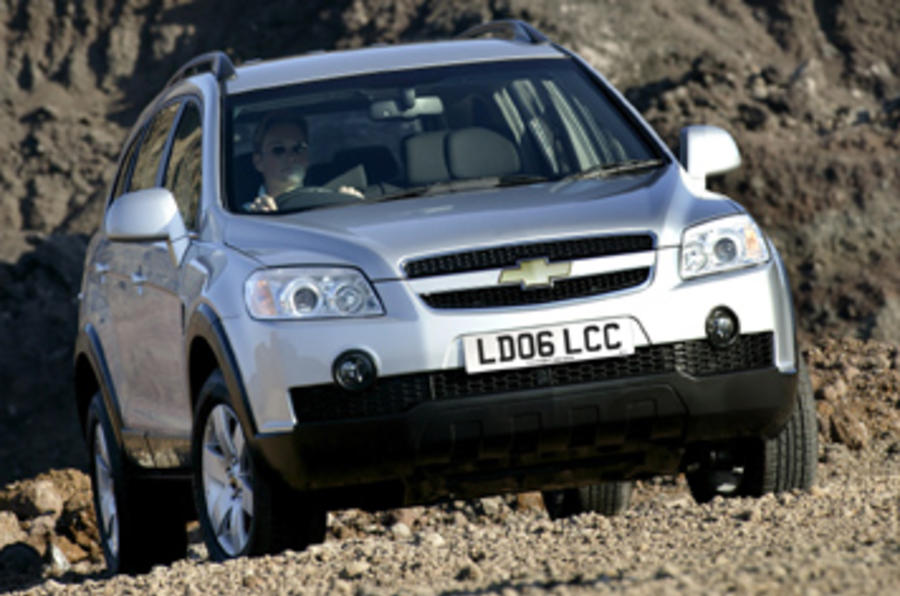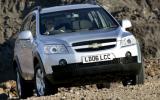What is it?
The Captiva is an all-new model from Chevrolet aimed at the burgeoning £20k soft-roader market. It's an alternative to the ubiquitous Honda CR-V and Toyota RAV4. And, if you tick the right box on the options list, it'll even come with seven seats.
What’s it like?
Sharply-styled and with a well-built, fresh-feeling cabin, the Captiva is the best-looking of Chevy’s current model range and a clue to much more competitive models coming from GM’s Korean outpost in the next few years.
Maybe the plastic body cladding and wheel arches won’t be to everyone’s taste, but they add some toughness to the well proportioned styling.
The model range is concentrated around a single engine, a four-cylinder, 2.0-litre turbo-diesel making 148bhp. A 134bhp 2.4-litre petrol engine is the only other option, and that’s limited to a sole entry-level model available with front-drive and five-seats only, but priced attractively at £16,995.
The Captiva’s secret weapon is a smooth-shifting, five-speed auto ‘box mated to the diesel engine, still an unusual combination. The first boatload of Captivas will shortly land in Britain and a third of the shipment are mid-spec diesel autos, making it the best-selling model, despite the slightly stiff-sounding £22,320 list price.
Like the majority of soft-roaders, the Captiva is predominantly front-drive, only shifting drive to the rear axle when the going gets very slippery.
On road grip and chassis balance are good and the steering is nicely-weighted around the straight ahead, although feel melts away on turn-in.
The diesel engine, co-developed in Korea with Italy’s VM Motori, delivers a smooth and refined rush of power, concentrated in the mid-range where most oil-burners are strong.
Its weak point is turbo lag; there's a sudden drop off in urge as the rev needle drops below 1500rpm, meaning that an inconvenient change to first is needed in slow corners if progress isn’t to be dulled completely.
Our main criticism of the Captiva is its ride though, particularly on the 18in wheels standard on the top-spec £24k LTX model. We drove some very rough Irish tarmac roads on the launch, but even on less demanding rural tarmac, the ride was choppy.
The 17in wheel-equipped LT is better, but still lacks the comfort and finesse of a CR-V or RAV4. GM’s chassis engineers are meant to have green-lighted the Captiva’s dynamics for the UK; what were they doing?
The seats aren’t great either, front or rear. Both rows feature hard upholstery and a lack of support.
Should I buy one?
If you do, we'd guess your decision would have to be based on an appreciation of its looks, because there are MPVs with superior dynamics and practicality.
The diesel auto seven-seater has its niche, but it's not as cheap as we'd hoped. And certainly the harsh ride of the top spec LTX rules it out as a family carry-all – any kids in the rearmost row of seats are going to go green very quickly.
The £21k diesel manual in LT spec is better, but still no match for a Honda CR-V. Once you get past the looks, in fact, the Captiva's a closer match for a Hyundai Santa Fe – but that definitely puts it in the second division of smaller SUVs.














Add your comment